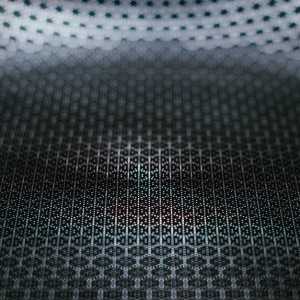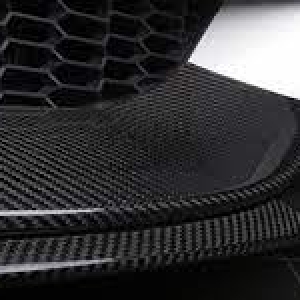Within the ever-evolving construction landscape, carbon fiber has become a catalyst for innovation, reshaping architectural possibilities. Carbon fiber laminates, tubes, rebars, and sheets are transformative elements in sustainable and disaster-resistant designs with exceptional strength and versatility. This blog will dig into the ecological impact, sustainable, disaster-resistant architecture, and seismic fortification offered by carbon fiber tubes.
Understanding Carbon Fiber Tubes
Carbon fiber is a lightweight, high-strength material composed of carbon atoms bonded together in a crystal alignment. Woven into tubes, it creates an exceptional strength-to-weight ratio structure, making it ideal for various applications, including construction.
Sustainability of Carbon Fiber
One of the primary advantages of Carbon fiber tubes and rebars lies in their sustainability. The sustainability of carbon fiber hinges on various factors, including the type of carbon fiber used. Traditional construction materials like steel and concrete are resource-intensive and contribute significantly to carbon emissions. At the forefront of eco-friendly options is lignin-based carbon fiber, derived from a natural resource with 50%-71% carbon content found in plant cell walls. Lignin-based carbon fiber boasts low thermal conductivity and high-temperature resistance and is easily reproducible and recyclable, making it a green choice for general applications.
Environmental Impact
The manufacturing process of carbon fiber can have a substantial environmental impact due to the energy-intensive oxidation and carbonization processes. The key lies in the type of energy used during production. Choosing renewable energy sources like hydro and wind power can significantly mitigate carbon emissions compared to non-renewable alternatives. Companies investing in carbon fiber should prioritize responsible material providers and consider the environmental footprint of their supply chain.
Durability of Disaster-Resistant Architecture
Building structures that can withstand earthquakes, hurricanes, and other catastrophes is crucial in the facade of increasing natural disasters. In earthquake-prone regions, the importance of disaster-resistant construction cannot be overstated. Carbon fiber Laminates, sheets, and especially tubes have proven instrumental in reinforcing structures against seismic activity. After earthquakes like the 1995 Panshin Earthquake in Japan and the Taiwan Earthquake, carbon fiber reinforced polymer (CFRP) gained recognition for its effectiveness in strengthening buildings and bridges. Carbon fiber tubes exhibit remarkable durability and flexibility, allowing them to absorb and distribute forces effectively. This makes buildings constructed with carbon fiber tubes more resilient against seismic activities and high winds, providing a robust solution for disaster-prone regions.
Carbon Fiber Advantages
High Strength and Lightweight: Carbon fiber rebars and tubes offer exceptional tensile strength while being significantly lighter than traditional materials like steel. This unique combination makes them ideal for earthquake-resistant structures.
Flexibility: The flexibility of carbon fiber fabric allows for efficient absorption and distribution of seismic forces, reducing the risk of structural damage during earthquakes.
Energy Efficiency: Carbon fiber tubes contribute to the energy efficiency of buildings. Their lightweight nature reduces the load on structures, allowing for more straightforward designs requiring less energy. Additionally, they offer excellent thermal insulation properties, helping to regulate indoor temperatures and reduce the need for excessive heating or cooling. Carbon fiber's ability to dissipate energy generated by seismic forces minimizes stress on structural elements, protecting them from damage and preventing catastrophic failure.
Adaptability in Design: The versatility of carbon fiber tubes opens up new possibilities in architectural design. Their ability to be molded into various shapes and sizes allows architects to create innovative, aesthetically pleasing structures. This adaptability contributes to the visual appeal of buildings and enhances their functionality and efficiency.
Lightweight Construction: Carbon fiber's lightweight nature is advantageous in seismic zones, as structures experience reduced inertia forces during earthquakes, enhancing their resistance.
Reduced Maintenance Costs: Due to their corrosion-resistant properties, carbon fiber tubes require minimal maintenance compared to traditional building materials. This reduction in maintenance costs benefits the building owner and aligns with sustainable construction principles by minimizing the need for constant repairs and replacements.
Case Studies: Successful Applications of Carbon Fiber Construction in Seismic Zones
Taichung Metro Green Line, Taiwan:
Carbon fiber construction was pivotal in reinforcing tunnel linings, enhancing structural integrity and seismic resistance.
Transbay Transit Center, San Francisco:
The integration of carbon fiber construction techniques improved the seismic resilience of the foundation and support columns, ensuring stability during earthquakes.
Trends and Future Prospects
Growing Use in High-Rise Buildings:
Carbon fiber's superior strength and flexibility make it increasingly popular in constructing high-rise buildings, especially in seismic-prone areas.
Integration with Smart Technologies:
Combining carbon fiber construction with sensors and monitoring systems provides real-time data on structural performance, enabling proactive maintenance and safety measures.
Advancements in Fiber Technology:
Ongoing research in fiber technology aims to develop even stronger and more durable materials, further enhancing seismic resistance.
Integration with Sustainable Practices:
Future optimization of carbon fiber for eco-friendly practices will reduce its carbon footprint while maintaining strength and resilience.
Carbon fiber tubes represent a promising avenue for sustainable and disaster-resistant architecture. As the construction industry continues to innovate, carbon fiber remains at the forefront, shaping a more resilient and sustainable future for architecture.
Source by- https://nitprocomposites.blogspot.com/2024/01/potential-of-carbon-fiber-tubes-in.html


